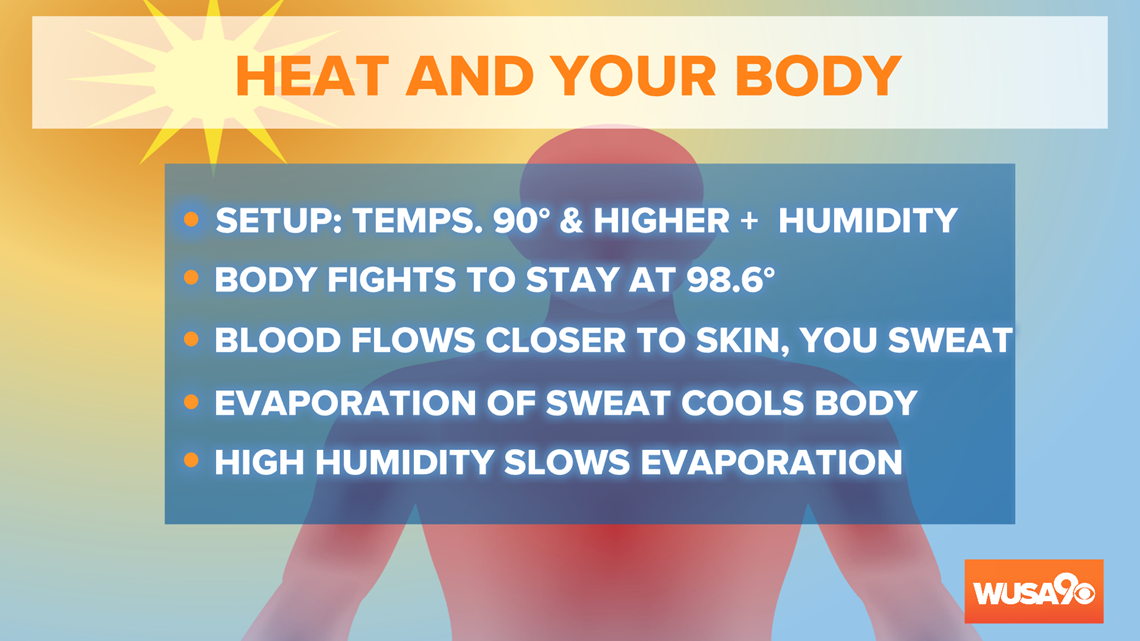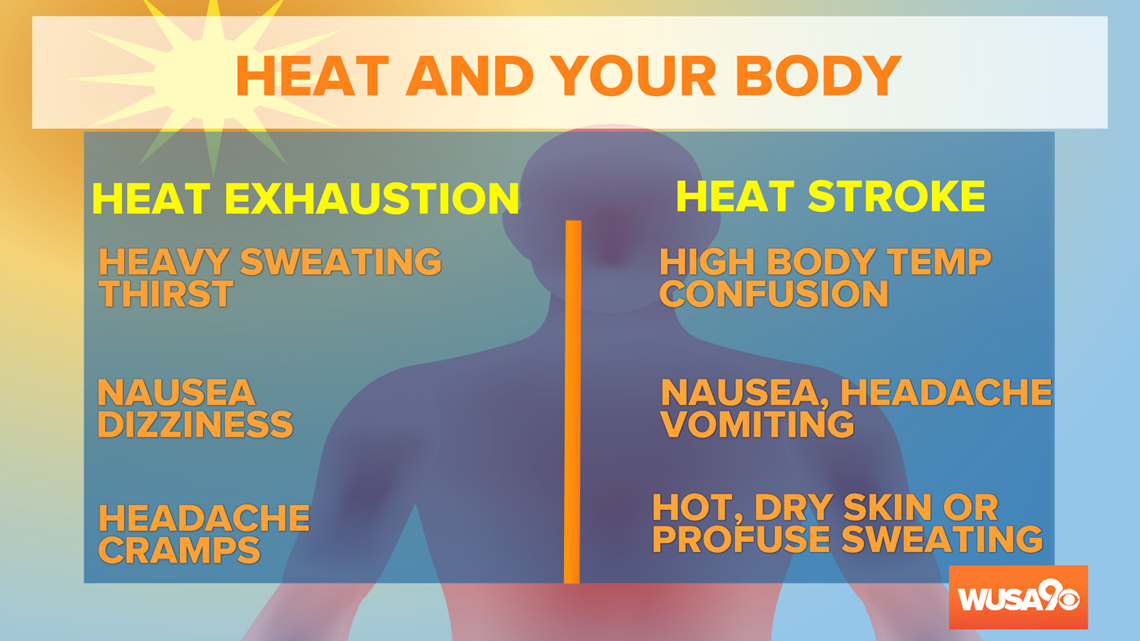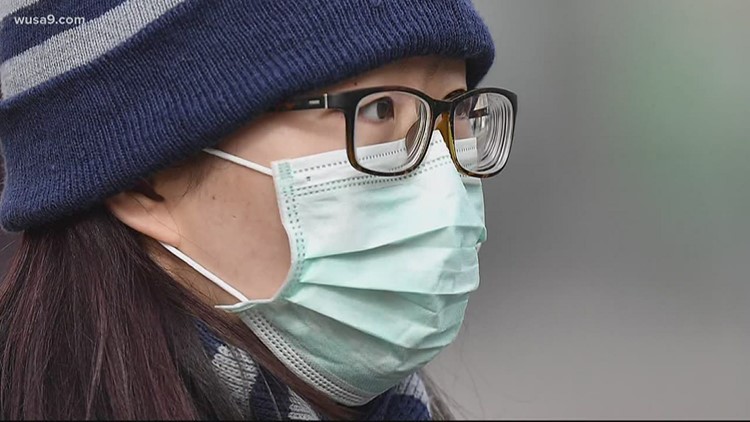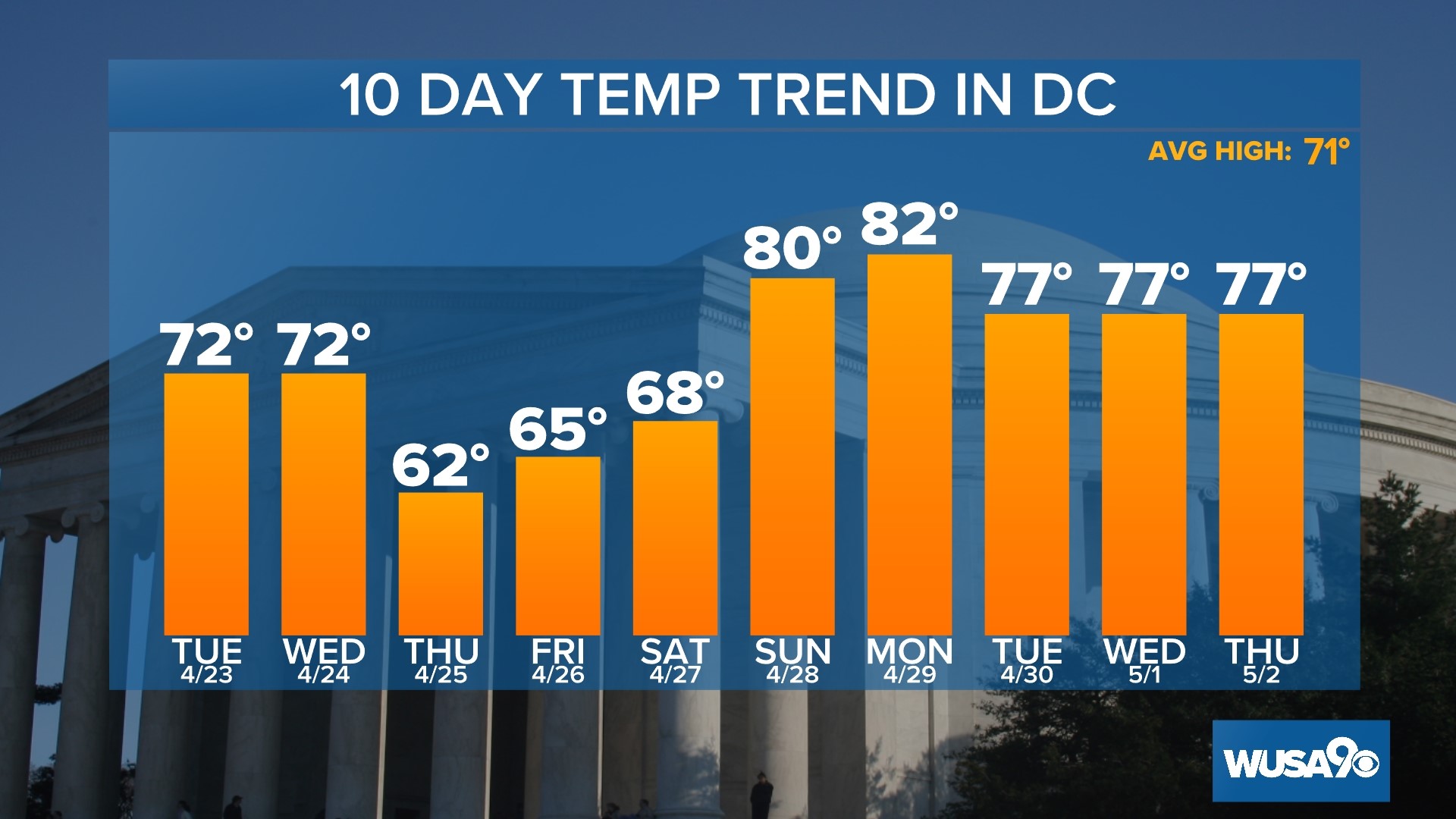WASHINGTON — As the weather gets hotter and businesses reopen, leaders in the DMV are still requiring face coverings to prevent the spread of COVID-19.
And it won't be comfortable wearing a face mask in 90 degree weather.
Experts said that certain face masks may have a small impact on thermoregulation, (how our bodies regulate body temperature). Some of that impact is physical and some is psychological.
"If for example, it's an N95 mask, there have been studies showing that those are kind of an impediment to breathing and can affect your perception of heat," said Dr. Amesh Adalja of Johns Hopkins. "Those are not the ones that we recommend that the general public wear," he said.
Adalja is the Senior Scholar at Johns Hopkins Center For Health Security and an expert in infectious diseases, critical care and emergency medicine.
Adalja said masks like homemade cloth masks or bandannas are more permeable and are likely less restrictive.
"Ultimately, it really comes down to, people are going to have a perception of the heat and they may feel uncomfortable with the mask. That's going to be something that's more idiosyncratic to the person," Adalja said.
In the study, Protective Facemask on Human Thermoregulation: An Overview, researchers found that masks may raise the body temperature.
In the analysis, researchers monitored health care workers while wearing the equivalent of surgical masks and N95 masks for 30 minutes while they completed their normal work duties. They found a 0.07 degree (Celsius) increase in temperature for those wearing surgical type masks and a 0.03 degree (Celsius) increase in those wearing N95 type masks.
In another example in the study, people wore fitted power air purifying respirators with temperatures of around 93 degrees. They performed low to moderate treadmill work for 20 minutes. Researchers found no additional metabolic/thermal load (heat generated from physical activity).
In the study researchers wrote:
"The relatively minor reported increases in core temperature directly attributable to the wearing of PFMs suggest that associated perceptions of increased body temperature may have a significant psychological component or that regional or global brain temperature changes are involved. "


Here's how heat attacks the body. In short, we cool ourselves by sweating and when the sweat evaporates it cools us off. However, when outdoor temperatures reach the 90s and humidity is high, that slows down the cooling process. The body then has to work harder to keep the average body temperature of 98.6 degrees.


Some symptoms of heat related illnesses include increased sweating, nausea, vomit, confusion, dizziness, cramps and a headache.



